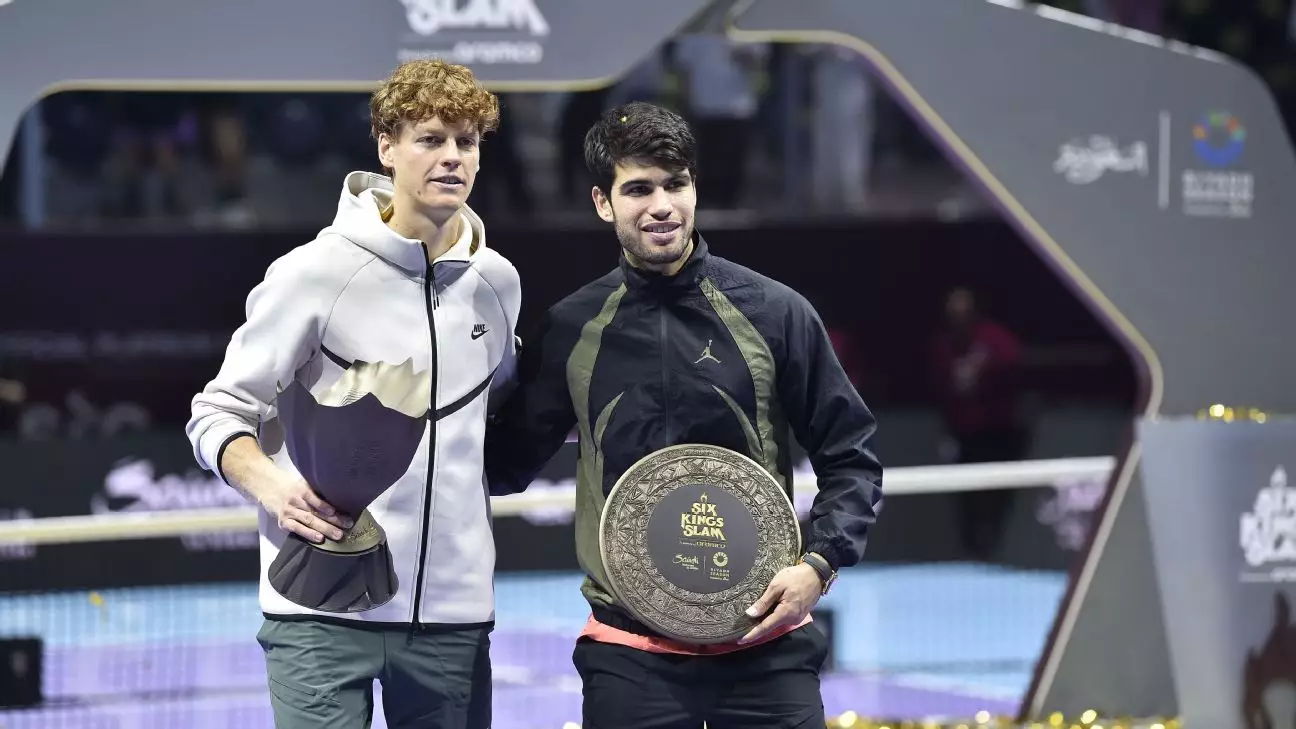In the world of tennis, the emergence of two young stars, Carlos Alcaraz and Jannik Sinner, is not just a spectacle; it marks the dawn of a promising rivalry that has captured the imagination of fans and analysts alike. At merely 21, Alcaraz, currently ranked No. 3, and the 23-year-old Sinner, the top-ranked player globally, have both showcased extraordinary talent and entrepreneurial spirit on the court. With each captivating match, they are not just competing for titles, but laying down an important narrative for the future of men’s tennis.
Their contrasting styles characterize the rivalry. Alcaraz, known for his explosive power and agility, brings an electrifying presence that has won him crucial victories, including Grand Slam titles. In contrast, Sinner’s composure and strategic gameplay render him a formidable opponent, allowing him to excel in major tournaments. The juxtaposition of their strengths has left fans eager to see who will emerge victorious in their upcoming encounters.
Despite the fierce competition, there exists a mutual respect between Alcaraz and Sinner that elevates their matches beyond mere sport. Following their latest encounter, Alcaraz unequivocally stated his admiration for Sinner’s accomplishments, noting, “Jannik is the best right now.” His acknowledgment of Sinner’s achievements in the past year is a testament to the high stakes and competitive spirit that defines their relationship. Alcaraz’s admission illustrates the humility that is often overshadowed by the glitz of competitive sport.
Sinner’s recent triumphs, including his successes at the US Open and the Australian Open, have fortified his position at the summit of men’s tennis. Such performances are not casual; they represent a continuous evolution of his game, showcasing his resilience and determination to maintain his position. With a remarkable record of 73 wins out of 79 matches in the current season, Sinner exemplifies the grit required to excel at the elite level.
The tennis community remains divided over who holds the edge in this budding rivalry, with opinions ranging from staunch support for Alcaraz to fervent advocacy for Sinner. Patrick Mouratoglou, a prominent coaching figure in tennis, has weighed in on the debate, claiming that Sinner is not definitively superior to Alcaraz and that outcomes between the two can be unpredictable. This endorsement reflects the intensity of their encounters, which have been marked by narrow margins and electrifying performances.
Alcaraz’s response to Mouratoglou’s comments emphasizes his belief that Sinner deserves recognition for his hard-earned victories. In doing so, he reinforces the importance of ongoing dialogue about competitiveness in sports—an essential component of athletic growth. The notion that both players can excel without undermining one another is a refreshing notion for fans accustomed to contrasting rivalries.
As they enter the 2024 tennis season, both players face immense expectations and challenges. Alcaraz, looking to reclaim lost momentum after a quarterfinal exit at the Australian Open, seems prepared to confront his next opponent in Rotterdam, Botic Van De Zandschulp. His acknowledgment of the tough match against Novak Djokovic highlights the unpredictable nature of elite competition, where even the brightest stars can stumble.
For Sinner, the ambition to remain at the top is a double-edged sword, as the pressure comes not only from opponents but from an increasing fanfare surrounding his performances. Navigating this newfound fame requires resilience and mental fortitude.
Ultimately, the narrative of Alcaraz and Sinner goes beyond their head-to-head matches; it signifies a generational shift in tennis. As they continue to clash on the court, their journeys will redefine the landscape of men’s tennis, captivating audiences with their athleticism, skill, and respect for one another. The potential for continued rivalry promises fans a thrilling spectacle for years to come—one that leaves fans curious to witness every shot, every set, and, ultimately, who will define this new chapter in tennis history.


Leave a Reply